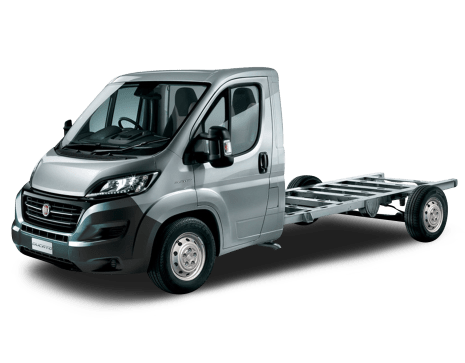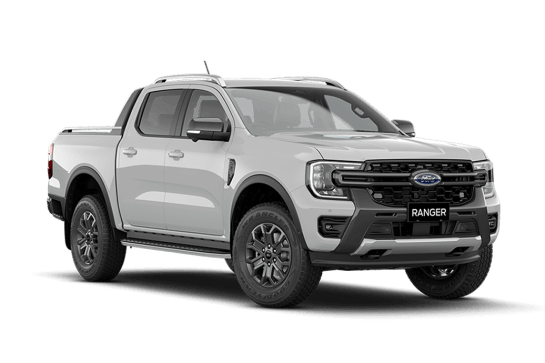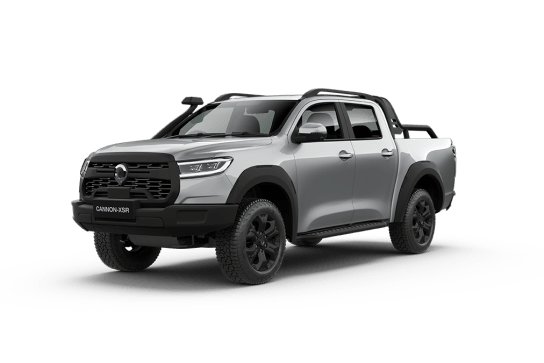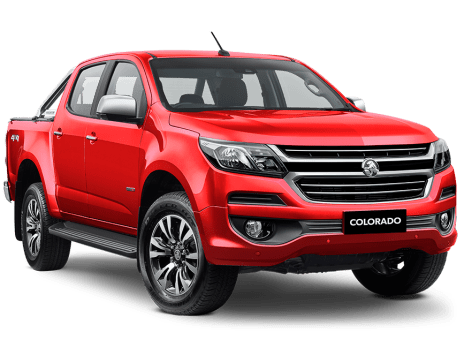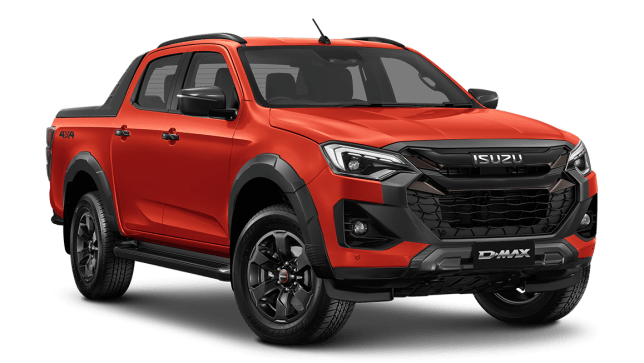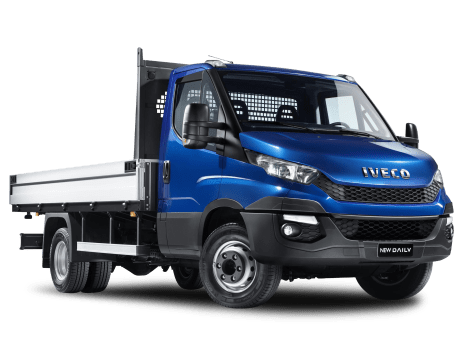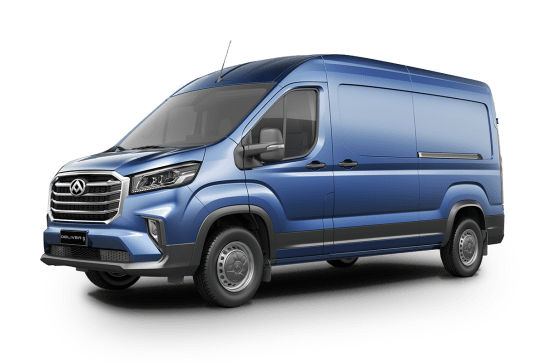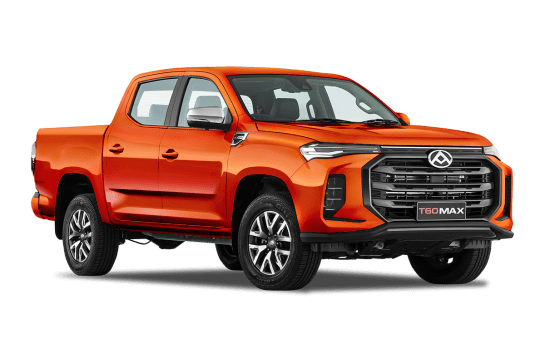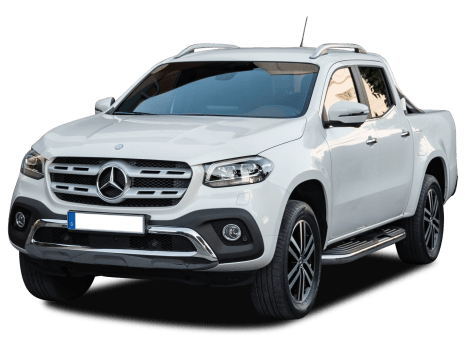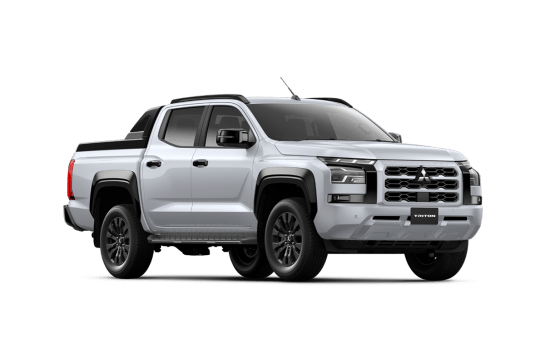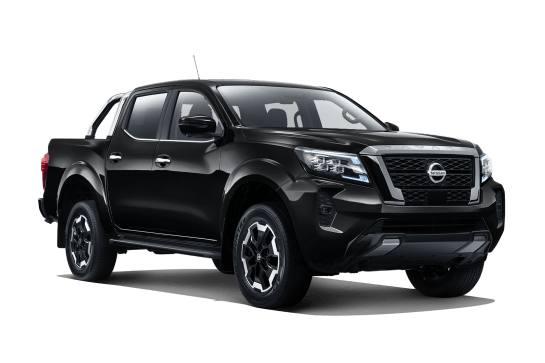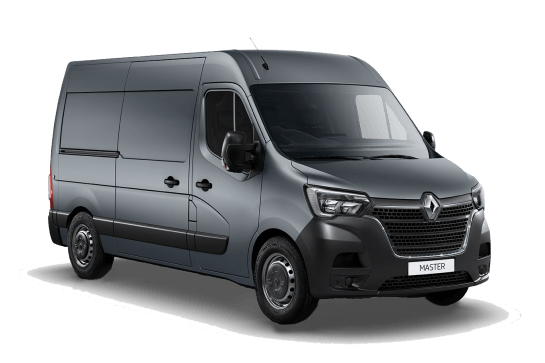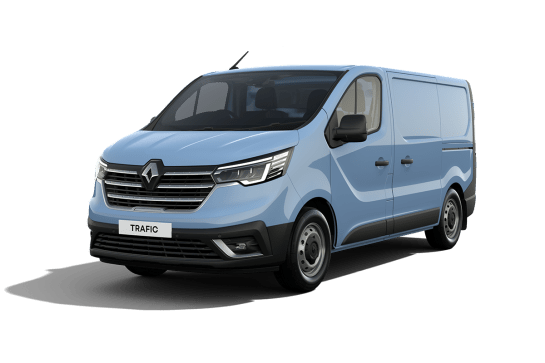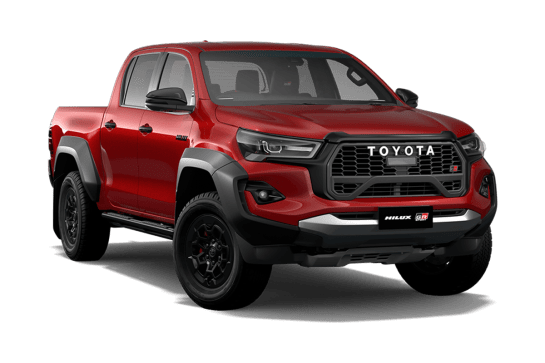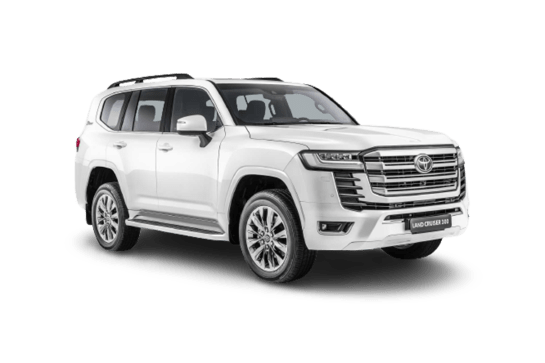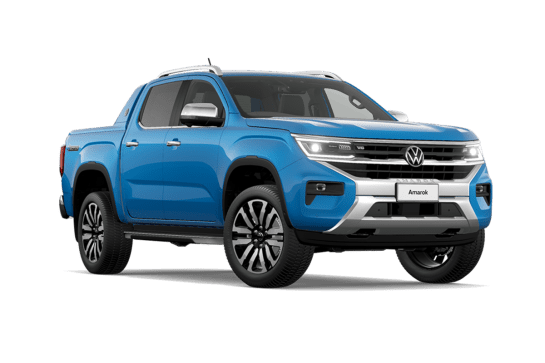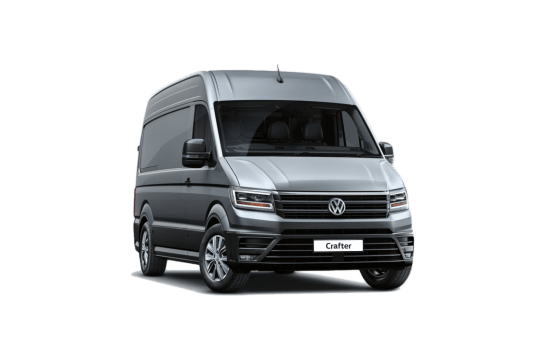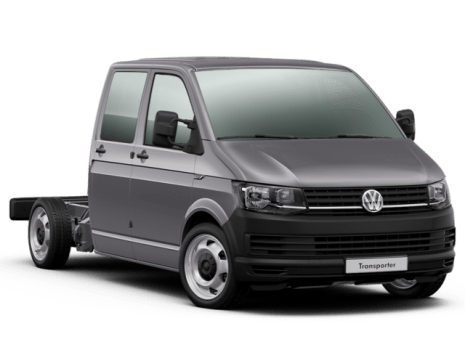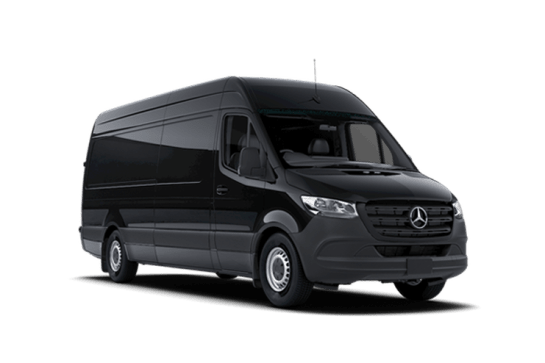
Mercedes-Benz Sprinter VS Renault Master
Mercedes-Benz Sprinter
Likes
- Safety
- Driver comfort
- All-round competence
Dislikes
- Pricing (compared to Chinese rivals)
- No driver’s left footrest/armrest
- Servicing costs
Renault Master
Likes
- Effortless diesel engine
- Good value
- Improved interior a big step up
Dislikes
- Manual shift not the most positive
- Well behind rivals on safety
- No proper automatic option
Summary
Mercedes-Benz Sprinter
The Mercedes-Benz Sprinter has long been a formidable competitor in the Light Duty (3501-8000kg GVM) division of Australia’s highly competitive Heavy Commercial vehicle market.
The popular range offers a choice of panel van, cab-chassis and minibus body styles, four turbo-diesel engine variants (plus an all-electric drivetrain), three wheelbase lengths and for panel vans plus the choice of two roof heights.
An extensive overhaul of the Sprinter range in 2024 brought extra safety technologies, new comfort and convenience features and other benefits, which Mercedes-Benz claims can help drivers work more efficiently. We recently put one of the latest models to the test.
Read more about
- Tough work van levels up: 2025 Mercedes-Benz Vito, eVito vans and V-Class people mover get big refresh with electric variants to tackle E-Transit Custom and LDV eDeliver
- Top 10 most expensive Mercedes-Benz cars
- Fully electric big battery eSprinter joins new Mercedes-Benz Sprinter range updated with advanced safety and media tech: Price and specs
| Safety rating | — |
|---|---|
| Engine Type | 2.0L turbo |
| Fuel Type | Diesel |
| Fuel Efficiency | —L/100km |
| Seating | 2 seats |
Renault Master
The Renault Master range has been refreshed, and this was our first chance to see what changes have been made.
You should be able to tell just by the look of the 2020 Master that there’s a new design with a more modern looking front-end. And the inside has been thoroughly modernised, too.
But with contemporary rivals such as the VW Crafter and Mercedes-Benz Sprinter - both of which launched in all-new generation guises in 2018 - the question is whether the ageing, yet facelifted Master is worthy of consideration.
We spent a week with it - and covered plenty of kays in it - to find out.
| Safety rating | — |
|---|---|
| Engine Type | 2.3L turbo |
| Fuel Type | Diesel |
| Fuel Efficiency | 8.3L/100km |
| Seating | 3 seats |
Verdict
Mercedes-Benz Sprinter8.5/10
Given the original Sprinter was released in 1995, it’s not surprising the current third-generation model feels like it’s benefitted greatly from decades of continuous refinement. Although the list price difference between our test vehicle and its closest Chinese rival is substantial, the 417 MWB Panel Van is hard to fault in terms of driver comfort, safety and all-round competence. It really is very good.
Renault Master6.4/10
If you’re after a budget-conscious offering in the large van segment, the Renault Master could be a really solid proposition. It falls short of the safety expectations set by its newer rival, though, and that’s something you might not be able to put a price on.
Design
Mercedes-Benz Sprinter
The 417 MWB Panel Van rides on a 3665mm wheelbase (the shortest of three Sprinter wheelbases) and is almost 6.0 metres long (5932mm), more than 2.0 metres wide (2020mm) and stands almost 2.4 metres tall (2378mm). Its 12.4 metres kerb-to-kerb turning circle is impressively tight for a vehicle of this length.
It rides on simple and rugged MacPherson strut front suspension, with a robust live axle/leaf-spring arrangement under the tail. Steering is via rack and pinion and it has disc brakes all around.
Look beyond the optional silver metallic paint on our example and there’s extensive use of unpainted dark grey plastic on all the external surfaces where hard-working vans are most prone to wear and tear, including the hubcaps, front/rear bumpers, grille, door-handles/mirror shells and along the sides.
Its work-focused exterior styling is nicely integrated, combined with an equally neat and functional interior design that offers a visually-pleasing combination of patterned fabric seat-facings and hard surfaces that blend different shades of grey with splashes of satin chrome and piano black.
We also like the feel and response of mechanical switches (rather than touchscreen prompts) for adjusting settings like cabin temperature, fan speed and media volume.
Renault Master
The front-end styling of the Master has been modernised with a “robust” new look which sees it adopt a more upright nose with a bulkier grille, squared-off headlights (with LED daytime running lights as standard, along with halogen headlights).
There were no other changes made to the exterior, so if you see it side on or from the rear, you’d be hard pressed to tell if it's the new model.
This is the second facelift for this generation (X62) Master, which originated back in 2010. It is also offered in some markets as a Nissan, Opel, and Vauxhall. And this version certainly freshens up the appearance, though the practicality of the Master line-up remains unchanged.
That’s a good thing: you can still get the van as a short-wheelbase with low roof (L1H1), a mid-wheelbase with mid roof (L2H2), a long-wheelbase with mid roof (L3H2), or an extra-long-wheelbase with high roof (L4H3). There’s also the choice of a single cab-chassis Platform ute model, too.
Our test model is the L2H2, meaning dimensions of 5575mm long on a lengthy 3682mm wheelbase (giving it a 13.6-metre turning circle), while the width is 2070mm and the height is 2499mm. Too tall for car parks (and drive-thru windows, in this age of social distancing).
The good news about the height, though, is that it allows you excellent interior dimensions. The cargo hold of this version is 3083mm long, 1765mm wide (and 1380mm between the wheel-arches, enough for Aussie pallets to slide in easily), and the height is 1894mm inside. I’m six-foot tall (1820mm) and that meant I could safely step in and out of the cargo zone without fear of hitting my head. The load space is 10.8 cubic metres in this spec.
As you’ll see in the interior section, the cabin has been given a bit of attention too - you can see it in the images below.
Practicality
Mercedes-Benz Sprinter
With its 2215kg kerb weight and 4100kg GVM, our test vehicle has a sizeable 1885kg payload rating.
It’s also rated to tow up to 2000kg of braked trailer and with its 6100kg GCM (or how it can legally carry and tow at the same time), that means it can tow its maximum trailer weight while hauling its maximum payload to ensure optimum versatility.
The cargo bay, which offers a cave-like 9.0 cubic metres of load volume and internal lighting front and rear, has internal dimensions of 3316mm length (with bulkhead), 1732mm width and 1719mm height.
So, with 1350mm between the rear wheel-housings, it can comfortably fit two standard 1165mm-square Aussie pallets or up to four 1200 x 800mm Euro pallets, held in place by a choice of 10 floor-mounted load-anchorage points.
The cargo bay is accessed through a single kerbside sliding door with a wide 1260mm opening, or symmetrical rear barn-doors with large handles on each pillar to assist operator access.
The barn-doors also have internal storage bins and open to a full 180-degrees to assist forklift and loading dock access. Thoughtfully, their hinge design also holds the doors firmly open at 180 degrees, to minimise the chance of wind gusts slamming them shut with potential injury to the operator.
There’s also plenty of cabin storage starting with two tiers of bins in each door, with the highest being spacious enough to hold large bottles.
There's also a deep shelf on the passenger side lower dash, a large lidded compartment in the central dash-pad and overhead shelves with lockable storage on the passenger side. Plus, the dash offers a total of eight cup/small-bottle holders.
The base cushion of the two-passenger bench seat is also hinged at the front, which allows it to tilt forward and provide access to a large hidden storage area beneath.
A crew of three can travel in relative comfort (for a commercial van that is) thanks to a central seating position that provides a sturdy hoop-handle for support, sufficient knee clearance from the dash even for tall people, and a reasonably flat and spacious floor area.
The cabin also features the latest next-gen 'MBUX' multimedia system with 10.25-inch touchscreen, which for the first time offers wireless connectivity for Apple CarPlay and Android Auto.
There’s also digital radio and enhanced functionality including an optional navigation upgrade with seven years of map updates.
Renault Master
Like all vans in this segment there are some cabin smarts that will make your life a lot easier if you spend a lot of time in the cockpit.
There are storage options aplenty, including overhead folder holders, a trio of dash-top storage caddies, dash-top cup holders, huge door pockets with bottle holders, some smaller storage cubbies near the shifter, and a glovebox that is, in the French tradition, good to hold a pair of gloves and not much else. This model had the dual passenger bench seat, with a hidden storage section underneath, and you can fold the middle seat down to form a desk platform with cup holders if that’s what you need.
Along with the storage smarts, the updated Master has seen some major changes in terms of infotainment intelligence, too. The new 7.0-inch MediaNav touchscreen system with Apple CarPlay and Android Auto is a welcome advancement for the brand, and during my time in the vehicle it proved simple to use and quick to react. The sound isn’t terrific, with just two speakers fitted, and I had to turn it up pretty loud to overcome the wind noise from this mid-roof model.
The driver’s seat is comfortable and offers decent adjustment, with height and lumbar adjustment. It’s easy to step up into the cab, too, despite there not being side grab handles. The driver also gets a new digital instrument display section on the redesigned dashboard, which includes a gear-shift indicator (but not a gear position indicator), and a digital speedometer and trip computer.
The steering wheel is new, too, and it’s much nicer than the old grainy plastic number in the pre-facelift version. Gone are the round vents across the dash and round plastic sections of the old model - now there are squared-off, more modern looking finishes that clearly aim to mimic the exterior’s now boxy-edged body.
In the cargo zone there are multiple tie-down hooks (eight on the floor, four on the side wall pillars), making for plenty of options to secure a load - though as can often be found with these eye-hook points, they can be a little too far inboard to make good use of, and in the Master’s case, there are no tie-down points rear of the wheel-arches. There is a 12-volt outlet in the back pillar, however.
Price and features
Mercedes-Benz Sprinter
Our test vehicle is the 417CDI MWB (Medium Wheelbase) Panel Van with standard roof height, which comes equipped with a 2.0-litre, four-cylinder, turbo-diesel engine and nine-speed automatic transmission for a list price of $86,018.
Our example is fitted with a couple of factory options, including the 'Cargo Pack' ($2265) which comprises a two-passenger bench seat, solid cabin bulkhead with fixed window and side-entrance assist handle, wooden cargo bay load floor and floor-to-roof wall-trim using 5.0mm-thick wood panelling.
It also has optional 'High-Tech Silver' metallic paint ($2534) which combined with the Cargo Pack raises the total price to $90,817.
In addition to the latest model’s upgraded safety (see Safety) and comfort/convenience (see Design) features, our test vehicle comes standard with 16-inch steel wheels and 235/65 R16C tyres plus a full-size spare, keyless start, steering wheel paddles for manual shifting, multi-function leather steering wheel, three USB-C ports and two 12-volt sockets, side marker lights and heated exterior mirrors.
There’s also daytime running lights, a parking package with reversing camera and front/rear parking sensors, traffic sign assist, tyre pressure monitoring and lots more.
Renault Master
The 2020 update for the Renault Master saw prices adjusted to compensate for additional standard equipment now offered range wide.
You can read the full pricing and specs breakdown story here, but the standard goodies for the Master include: a new 7.0-inch touchscreen media system with USB input, Bluetooth, Apple CarPlay, Android Auto, sat nav and reversing camera display, a two-speaker sound system, rear parking sensors, 16-inch steel wheels with a full size spare fitted under the rear body, body-protective cladding, twin-view side mirrors with electric adjustment, electric windows, cruise control, air conditioning, remote central locking, halogen headlights, LED daytime running lights, and rear fog lights.
The list price for the L2H2 mid-wheelbase manual model used in this review is $47,490 plus on-road costs (RRP or MSRP), but Renault is advertising this exact spec for $47,990 drive-away, which is pretty compelling - you don’t even need to be an ABN holder for that discount.
The Master MWB van comes as standard with barn doors at the rear (270-degree opening), and a sliding side door on kerb side (left), while SWB models get 180-degree barn doors. It also features a steel bulkhead as standard, as well as a three-seat layout up front. There’s a handy lift-up base on the bench part of the seat, which allows you about 100 litres of hidden storage if you need it.
There are numerous options for buyers to customise their van to suit what they need. There are several packs to choose from, such as: the Trade Pack - wooden floor, full height timber wall lining, rear step, LED ceiling lights ($1600); the Business Pack - front fog lights, hands-free key card and push-button start, chrome exterior and interior trim finishes ($1000); and the Convenience Pack - auto high/low beam lights, lane departure warning, blind spot monitoring and front parking sensors ($1000).
You can option individual elements such as a driver’s side sliding door ($800), a driver’s suspension seat ($800 - removes the side airbag for the driver), a single passenger seat ($200 - N/A with driver suspension seat, adds passenger-side airbag protection), and if you choose RWD model there’s an available differential lock ($1000). Last but not least, you can have glazed dual sliding doors for $800, but only if you also option the Trade Pack.
Colour options include no-cost solid paint finishes in white, grey, dark blue, light blue, yellow, orange and red (the interesting colours will need to be pre-ordered). There are also three metallic paint options in grey, black or a silver/blue look, and the cost there is $1000.
Under the bonnet
Mercedes-Benz Sprinter
The (OM654) 2.0-litre, four-cylinder, turbo-diesel, which meets Euro 6 emissions standards using AdBlue, produces 125kW of power at 3800rpm with peak torque of 400Nm served between 1700-2400rpm. The nine-speed torque converter automatic offers the choice of sequential manual-shifting using the steering wheel-mounted paddles.
Renault Master
The power outputs and torque figures depend on the transmission you choose.
Despite the fact that both manual and automatic versions of the Master run a 2.3-litre four-cylinder diesel engine, there’s a difference between the engines: the version with the six-speed manual transmission is a twin-turbo unit, while the six-speed automated manual transmission makes use of a single-turbo diesel.
There’s not much in it when it comes to the difference in outputs, however.
The manual version has a slight horsepower advantage, with 120kW of power (at 3500rpm) and 360Nm of torque (at 1500rpm).
The automated manual has a maximum power of 110kW (at 3500rpm) and 350Nm of torque (at 1500rpm).
Both transmissions are geared the same across all six ratios, though from experience, the automated manual is best left at the showroom. While rivals offer conventional torque converter automatic gearboxes to appeal to a broader customer base globally, the French brand persists with its pernickety somewhat-auto option instead.
The majority of models in the Master range are front-wheel drive (FWD), but there are a couple of long-wheelbase rear-wheel drive (RWD) models available. None are all-wheel drive (AWD) or four-wheel drive (4WD).
You might be interested to note the weight specs for the Master range. There are too many variables to bore you with here, but the details on the L2H2 mid-wheelbase manual I tested, according to Renault Australia, are as follows: kerb weight - 1887kg; gross vehicle mass/GVM - 3510kg; payload - 1623kg; towing capacity - 750kg un-braked, 2500kg braked. The gross combination mass (GCM) is 6000kg.
Efficiency
Mercedes-Benz Sprinter
The dash display was claiming average combined consumption of 9.5L/100km when we stopped to refuel at the completion of our 281km test, of which about one third of that distance was hauling a heavy payload (see Driving).
Our own figure of 11.7 (based on actual fuel bowser and tripmeter figures) was higher but still reasonable economy for a vehicle in this GVM class in mostly urban use.
So, based on our own figures, you could expect a ‘real world’ driving range of around 800km from its 93-litre tank, which has been enlarged from 71 litres as part of the latest upgrades.
Renault Master
There is no official combined fuel consumption claim figure stated by Renault, as the vehicle falls into the heavy commercial vehicle space.
But I can tell you it’s pretty impressive for fuel economy. I saw an average of just 8.5 litres per 100 kilometres over more than 1000km of testing - more than half of which was with the van loaded up with hundreds of kilograms of load.
With a 100-litre diesel tank, you could theoretically get about 1150km to a fill, and that’s with a mix of loaded and unloaded driving.
One thing, though: most vehicles have a graphic on their dashboard to show which side the filler neck is - you know, you see a fuel bowser and the filler is on the right, that means your vehicle’s filler is on the right. Not in the Master. It has a graphic with the filler on the right, but the actual fuel cap is on the left. And like most vans, you have to open the passenger door to fuel up.
Worried about AdBlue? No need - the engine used in the Master range is a Euro 5 unit, so there is a diesel particulate filter, but no urea after treatment setup to mention.
Driving
Mercedes-Benz Sprinter
Large handles on the doors and overhead shelves assist climbing aboard and there’s enough adjustment in the well-bolstered seat and leather-rimmed steering wheel to find a comfortable position.
Driver views from all angles are excellent thanks to well-designed mirrors along with cameras supported by active aids like blind-spot monitoring etc.
The cabin, with its high roof relative to seat height, has a spacious and airy feel and all controls are reasonably intuitive and easy to reach.
Unladen ride quality is surprisingly supple for a vehicle with a 6.0-tonne-plus GCM rating, combined with excellent steering feel that strikes a fine balance between minimal turning effort at low speeds (for loading etc) and firm handling response at higher speeds.
The drivetrain is also energetic, pulling strongly and cleanly from 1000rpm even though its maximum torque is tapped higher in the 1700-2400rpm zone. The automatic transmission has admirable refinement, with near-seamless shifting between its nine ratios.
The Sprinter is also impressively quiet at speeds up to 80km/h. Tyre and wind noise (the latter mainly around the large door mirrors) naturally increase at highway speeds, but remain far from intrusive. And with the engine requiring less than 2000rpm to maintain 110km/h, it’s well-suited to highway work.
To test its load-carrying ability, we forklifted 1.3 tonnes into the cargo bay which with driver equalled a payload of 1.4 tonnes. That's still almost half a tonne less than its limit.
Not surprisingly, it handled this load with ease, as handling and braking were largely unaffected and the ride quality became smoother thanks to such a big increase in sprung weight. Even so, the rear springs only compressed about 30mm.
It easily conquered our 13 per cent gradient, 2.0km-long set climb at 60km/h with this load onboard, as the auto downshifted to fourth gear to tap maximum torque when hauling this load to the summit.
Engine-braking on the way down, in a manually-selected second gear, wasn’t as robust but not unexpected given a 2.0-litre engine trying to restrain 1.4 tonnes of payload on a steep descent. Even so, the quartet of disc brakes efficiently kept speeds in check.
Overall, it was an impressive performance. However, we did note that the speed sign recognition function was not working for the duration of our test. And some welcome enhancements would be a driver’s left footrest and a fold-down inboard armrest for the driver’s seat, as fitted to its smaller Vito sibling.
Renault Master
I did a mix of driving in the Master over the week I had it, including more than 600km of unladen driving.
Why so many kays? I used it to move house, which meant I completed two “full” trips between Sydney’s inner-west and Cowra in the Central West of NSW, and two “empty” trips back to Sydney, as well.
I’ll get to how it drove with a load on board in the section below, but the unladen experience was pretty positive.
The engine and transmission are well teamed, and there’s a good amount of usable torque and very little lag to speak of.
As with this entire generation of engines - a derivative engine in a different state of tune is used in the Nissan Navara - the refinement is mostly good until you reach higher in the rev range, where it can get a bit noisy and clattery. But the best work is done down low in the rev zone anyway.
The manual shift action isn’t what I’d call “slinky”, more “clicky”. But it’s easy to row between gears as the action is light and the clutch isn’t too heavy, either. The gearing is generous, meaning you can saunter in sixth gear around 70km/h without the engine labouring too hard, and it’ll accelerate from there to freeway pace - provided you’re not going uphill.
There is a bit of ratio management required if you encounter a steep incline, but generally it’s a decently strong powertrain for its intended use - more on that below.
I’m always astounded about the steering and ride characteristics of vans of this size. Yes, it’s large, and yes, it can get blown around a little by crosswinds, and yes, you need to factor in the longish-wheelbase and larger turning circle that results from that… but it drives a lot smaller than it is.
The steering is direct and accurate, easy to judge at high or low speeds - which is great news when you’re parking (and there’s a good quality reversing camera and rear parking sensors, but you’ve just gotta remember the roof height, too).
The ride is adequate without a load on board, too. The independent McPherson strut front suspension copes well with changes in surface and bump control, though it can be a little bouncy at times. The rear suspension is a leaf-spring torsion beam setup, and it can be a little clumsy over road joins when unladen.
It also brakes well, with solid and trustworthy response from the four-wheel disc brakes at all speeds.
Safety
Mercedes-Benz Sprinter
ANCAP ratings do not apply to Heavy Commercial vehicles. Even so, in addition to the Sprinter’s existing long menu of passive and active safety features, the latest range adds significant enhancements as standard equipment including thorax-protecting airbags for driver and passenger, lane-keeping assist, traffic sign assist, rain-sensing wipers, tyre pressure monitoring and a parking package with reversing camera and front/rear sensors.
Also new is ‘Moving Off Information Assist’ which utilises a camera mounted in the grille plus six ultrasonic sensors to monitor an area 3.7 metres in front of the steered direction of the vehicle and 0.5 metres to the side.
This automatically activates at start-up and remains active up to 10km/h. So, if a road user is detected in the monitored area, the driver is alerted by audible and visual signals.
The latest range also introduces ‘Sideguard Assist’ which provides extended detection in the blind-spot on the passenger side. It activates when the vehicle is stationary and at low speeds, providing an extra set of eyes during parking, low-speed manoeuvring and traffic congestion.
Renault Master
While there has been a safety revolution in the van segment in recent years led by Mercedes and VW, Renault has been left behind to a degree.
The Renault Master has never been put through NCAP or ANCAP crash testing. So there’s no safety star rating to speak of.
And it falls short of its chief rivals, as it doesn’t have any sort of auto emergency braking (AEB) or forward collision warning system at all.
It has a reversing camera and rear parking sensors, plus dual front airbags and driver’s side airbag protection (not passenger though?), and there are no curtain airbags either. But it has electronic stability control (ESC), electronic brake force distribution, and hill start assist with Renault’s Grip X-tend system that is designed to allow better traction in slippery situations.
You can option some safety technology into the manual versions of the Master, by way of the Convenience Pack. For $1000 it adds auto high/low beam lights, lane departure warning (not active lane keeping assist), blind spot warning (not rear cross-traffic alert), and front parking sensors.
I understand the argument that buyers shouldn’t have to pay for anything they don’t need, especially when it comes to business vehicles. But I hope that behind closed doors Renault is working furiously to improve the safety equipment offering as a matter of priority.
Ownership
Mercedes-Benz Sprinter
Warranty is five years/250,000km whichever occurs first and includes a roadside assist support package.
Scheduled servicing is every 12 months/40,000km. Pay-as-you-go capped-pricing for the first five scheduled services totals $5905, or a pricey average of $1181 per year. Service plans are also available.
Renault Master
The Renault van range is covered by a warranty plan that isn’t as good as you’ll get from VW or Ford. That is, the Master (and Trafic and Kangoo below it) have a three-year/unlimited kilometre warranty cover, which is two years shorter than the best in the class.
Service intervals are business-friendly at 12 months/30,000km, with a capped-price service plan spanning the first three years/90,000km. The service price is $599 per visit, but keep in mind you will need to replace the coolant ($132) and brake fluid ($79) every 60,000km. There’s also an accessory belt replacement at 90,000km ($506).
If you service your van at Renault, you’ll also be eligible for up to four years of roadside assistance cover. From the showroom floor there is 12 months cover.
Concerned about issues, problems, recalls, questions, queries, complaints, or reliability issues? Check out our Renault Master problems page.
